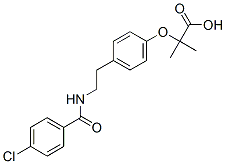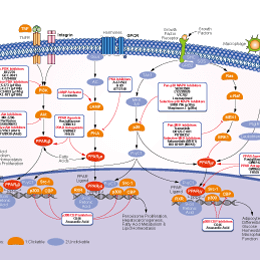
- Bioactive Compounds
- By Signaling Pathways
- PI3K/Akt/mTOR
- Epigenetics
- Methylation
- Immunology & Inflammation
- Protein Tyrosine Kinase
- Angiogenesis
- Apoptosis
- Autophagy
- ER stress & UPR
- JAK/STAT
- MAPK
- Cytoskeletal Signaling
- Cell Cycle
- TGF-beta/Smad
- DNA Damage/DNA Repair
- Compound Libraries
- Popular Compound Libraries
- Customize Library
- Clinical and FDA-approved Related
- Bioactive Compound Libraries
- Inhibitor Related
- Natural Product Related
- Metabolism Related
- Cell Death Related
- By Signaling Pathway
- By Disease
- Anti-infection and Antiviral Related
- Neuronal and Immunology Related
- Fragment and Covalent Related
- FDA-approved Drug Library
- FDA-approved & Passed Phase I Drug Library
- Preclinical/Clinical Compound Library
- Bioactive Compound Library-I
- Bioactive Compound Library-Ⅱ
- Kinase Inhibitor Library
- Express-Pick Library
- Natural Product Library
- Human Endogenous Metabolite Compound Library
- Alkaloid Compound LibraryNew
- Angiogenesis Related compound Library
- Anti-Aging Compound Library
- Anti-alzheimer Disease Compound Library
- Antibiotics compound Library
- Anti-cancer Compound Library
- Anti-cancer Compound Library-Ⅱ
- Anti-cancer Metabolism Compound Library
- Anti-Cardiovascular Disease Compound Library
- Anti-diabetic Compound Library
- Anti-infection Compound Library
- Antioxidant Compound Library
- Anti-parasitic Compound Library
- Antiviral Compound Library
- Apoptosis Compound Library
- Autophagy Compound Library
- Calcium Channel Blocker LibraryNew
- Cambridge Cancer Compound Library
- Carbohydrate Metabolism Compound LibraryNew
- Cell Cycle compound library
- CNS-Penetrant Compound Library
- Covalent Inhibitor Library
- Cytokine Inhibitor LibraryNew
- Cytoskeletal Signaling Pathway Compound Library
- DNA Damage/DNA Repair compound Library
- Drug-like Compound Library
- Endoplasmic Reticulum Stress Compound Library
- Epigenetics Compound Library
- Exosome Secretion Related Compound LibraryNew
- FDA-approved Anticancer Drug LibraryNew
- Ferroptosis Compound Library
- Flavonoid Compound Library
- Fragment Library
- Glutamine Metabolism Compound Library
- Glycolysis Compound Library
- GPCR Compound Library
- Gut Microbial Metabolite Library
- HIF-1 Signaling Pathway Compound Library
- Highly Selective Inhibitor Library
- Histone modification compound library
- HTS Library for Drug Discovery
- Human Hormone Related Compound LibraryNew
- Human Transcription Factor Compound LibraryNew
- Immunology/Inflammation Compound Library
- Inhibitor Library
- Ion Channel Ligand Library
- JAK/STAT compound library
- Lipid Metabolism Compound LibraryNew
- Macrocyclic Compound Library
- MAPK Inhibitor Library
- Medicine Food Homology Compound Library
- Metabolism Compound Library
- Methylation Compound Library
- Mouse Metabolite Compound LibraryNew
- Natural Organic Compound Library
- Neuronal Signaling Compound Library
- NF-κB Signaling Compound Library
- Nucleoside Analogue Library
- Obesity Compound Library
- Oxidative Stress Compound LibraryNew
- Plant Extract Library
- Phenotypic Screening Library
- PI3K/Akt Inhibitor Library
- Protease Inhibitor Library
- Protein-protein Interaction Inhibitor Library
- Pyroptosis Compound Library
- Small Molecule Immuno-Oncology Compound Library
- Mitochondria-Targeted Compound LibraryNew
- Stem Cell Differentiation Compound LibraryNew
- Stem Cell Signaling Compound Library
- Natural Phenol Compound LibraryNew
- Natural Terpenoid Compound LibraryNew
- TGF-beta/Smad compound library
- Traditional Chinese Medicine Library
- Tyrosine Kinase Inhibitor Library
- Ubiquitination Compound Library
-
Cherry Picking
You can personalize your library with chemicals from within Selleck's inventory. Build the right library for your research endeavors by choosing from compounds in all of our available libraries.
Please contact us at [email protected] to customize your library.
You could select:
- Antibodies
- Bioreagents
- qPCR
- 2x SYBR Green qPCR Master Mix
- 2x SYBR Green qPCR Master Mix(Low ROX)
- 2x SYBR Green qPCR Master Mix(High ROX)
- Protein Assay
- Protein A/G Magnetic Beads for IP
- Anti-Flag magnetic beads
- Anti-Flag Affinity Gel
- Anti-Myc magnetic beads
- Anti-HA magnetic beads
- Magnetic Separator
- Poly DYKDDDDK Tag Peptide lyophilized powder
- Protease Inhibitor Cocktail
- Protease Inhibitor Cocktail (EDTA-Free, 100X in DMSO)
- Phosphatase Inhibitor Cocktail (2 Tubes, 100X)
- Cell Biology
- Cell Counting Kit-8 (CCK-8)
- Animal Experiment
- Mouse Direct PCR Kit (For Genotyping)
- New Products
- Contact Us
Bezafibrate
Synonyms: BM 15075
Bezafibrate (BM 15075) is the first clinically tested dual and pan-PPAR co-agonism.

Bezafibrate Chemical Structure
CAS No. 41859-67-0
Purity & Quality Control
Batch:
Purity:
99.78%
99.78
Bezafibrate Related Products
| Related Targets | PPARα PPARβ/δ PPARγ PPARδ | Click to Expand |
|---|---|---|
| Related Products | T0070907 GW9662 GW6471 WY-14643 (Pirinixic Acid) GSK3787 GW0742 AZ6102 Astaxanthin Eupatilin GSK0660 Oroxin A Harmine Palmitoylethanolamide Lanifibranor (IVA-337) DG172 dihydrochloride Glabridin Ciprofibrate Clofibric Acid Alpinetin Elafibranor Daidzein Gypenoside XLIX | Click to Expand |
| Related Compound Libraries | Metabolism Compound Library Anti-cancer Metabolism Compound Library Glutamine Metabolism Compound Library Carbohydrate Metabolism Compound Library Lipid Metabolism Compound Library | Click to Expand |
Signaling Pathway
Biological Activity
| Description | Bezafibrate (BM 15075) is the first clinically tested dual and pan-PPAR co-agonism. | |
|---|---|---|
| Targets |
|
| In vitro | ||||
| In vitro | Bezafibrate is a lipid-lowering fibric acid derivative. Bezafibrate binds to xPPARβ with EC50 of 5 μM. Bezafibrate transcriptionally activates the PPARβ of Xenopus with EC50 of 1 μM. [1] Bezafibrate exposure to rat primary culture of adipocytes for 24 h increases the mRNA levels of crucial genes involved in peroxisomal and mitochondrial β-oxidation. The mRNA levels of the peroxisomal β-oxidation rate-limiting enzyme acyl-CoA oxidase and of the muscle-type carnitine palmitoyl transferase I (M-CPT-I) increases by 1.6-fold and 4.5-fold, respectively. Bezafibrate induces an increase in the transcript levels of the uncoupling protein-2 (UCP-2; 1.5-fold induction) and UCP-3 (3.7-fold induction), mitochondrial proteins that reduce ATP yield and may facilitate the oxidation of fatty acids. Furthermore, Bezafibrate increases the mRNA levels of the fatty acid translocase (2-fold induction). Bezafibrate causes a 1.9-fold induction in 9,10-[3H]palmitate oxidation. Moreover, Bezafibrate reduces the mRNA expression of several adipocyte markers, including PPARγ (30% reduction), tumor necrosis factor-α (33% reduction), and the ob gene (26% reduction). The reduction of the adipocyte markers causes by Bezafibrate is accompanied by an increase in the mRNA levels of the preadipocyte marker Pref-1 (1.6-fold induction). [2] | |||
|---|---|---|---|---|
| In Vivo | ||
| In vivo | Bezafibrate treatment is able to induce increasing mRNA levels of M-CPT-I (4.5-fold induction), fatty acid translocase (2.6-fold induction) and Pref-1 (5.6-fold induction) in epididymal white adipose tissue of rats. Similarly, increases. [2] Bezafibrate feeding causes a significant increase in liver weight in wild-type and PPARβ-null mice compared to controls, while liver weight is unchanged in Bezafibrate-fed PPAR-α null mice. Gonadal adipose stores are significantly smaller in wild-type and PPARβ-null mice fed Bezafibrate than in controls (2.8-fold less and ~2.6-fold less, respectively), and this effect is not found in similarly fed PPARα-null mice. Bezafibrate is able to cause changes of mRNAs encoding lipid metabolizing enzymes (such as AOX , cytochrome P450 4A (CYP4A), LPL, ACS, and LCA D) in wild-type, PPARβ-null mice and PPARα-null mice compared to controls. [3] Bezafibrate is able to induce UCPs expression, and modify energy homeostasis by directly inducing aco gene expression (14.5-fold at 7 days) and peroxisomal fatty acid β-oxidation in white adipose tissue of rats. Further, Bezafibrate significantly reduces plasma triglyceride and leptin concentrations, without modifying the levels of PPARγ or ob gene in white adipose tissue. [4] | |
|---|---|---|
| NCT Number | Recruitment | Conditions | Sponsor/Collaborators | Start Date | Phases |
|---|---|---|---|---|---|
| NCT02291796 | Completed | Acute Myocardial Infarction |
Instituto Mexicano del Seguro Social |
January 2011 | Phase 4 |
Chemical Information & Solubility
| Molecular Weight | 361.82 | Formula | C19H20ClNO4 |
| CAS No. | 41859-67-0 | SDF | Download Bezafibrate SDF |
| Smiles | CC(C)(C(=O)O)OC1=CC=C(C=C1)CCNC(=O)C2=CC=C(C=C2)Cl | ||
| Storage (From the date of receipt) | |||
|
In vitro |
DMSO : 72 mg/mL ( (198.99 mM) Moisture-absorbing DMSO reduces solubility. Please use fresh DMSO.) Ethanol : 60 mg/mL Water : Insoluble |
Molecular Weight Calculator |
|
In vivo Add solvents to the product individually and in order. |
In vivo Formulation Calculator |
||||
Preparing Stock Solutions
Molarity Calculator
In vivo Formulation Calculator (Clear solution)
Step 1: Enter information below (Recommended: An additional animal making an allowance for loss during the experiment)
mg/kg
g
μL
Step 2: Enter the in vivo formulation (This is only the calculator, not formulation. Please contact us first if there is no in vivo formulation at the solubility Section.)
% DMSO
%
% Tween 80
% ddH2O
%DMSO
%
Calculation results:
Working concentration: mg/ml;
Method for preparing DMSO master liquid: mg drug pre-dissolved in μL DMSO ( Master liquid concentration mg/mL, Please contact us first if the concentration exceeds the DMSO solubility of the batch of drug. )
Method for preparing in vivo formulation: Take μL DMSO master liquid, next addμL PEG300, mix and clarify, next addμL Tween 80, mix and clarify, next add μL ddH2O, mix and clarify.
Method for preparing in vivo formulation: Take μL DMSO master liquid, next add μL Corn oil, mix and clarify.
Note: 1. Please make sure the liquid is clear before adding the next solvent.
2. Be sure to add the solvent(s) in order. You must ensure that the solution obtained, in the previous addition, is a clear solution before proceeding to add the next solvent. Physical methods such
as vortex, ultrasound or hot water bath can be used to aid dissolving.
Tech Support
Answers to questions you may have can be found in the inhibitor handling instructions. Topics include how to prepare stock solutions, how to store inhibitors, and issues that need special attention for cell-based assays and animal experiments.
Tel: +1-832-582-8158 Ext:3
If you have any other enquiries, please leave a message.
* Indicates a Required Field
Tags: buy Bezafibrate | Bezafibrate ic50 | Bezafibrate price | Bezafibrate cost | Bezafibrate solubility dmso | Bezafibrate purchase | Bezafibrate manufacturer | Bezafibrate research buy | Bezafibrate order | Bezafibrate mouse | Bezafibrate chemical structure | Bezafibrate mw | Bezafibrate molecular weight | Bezafibrate datasheet | Bezafibrate supplier | Bezafibrate in vitro | Bezafibrate cell line | Bezafibrate concentration | Bezafibrate nmr







































